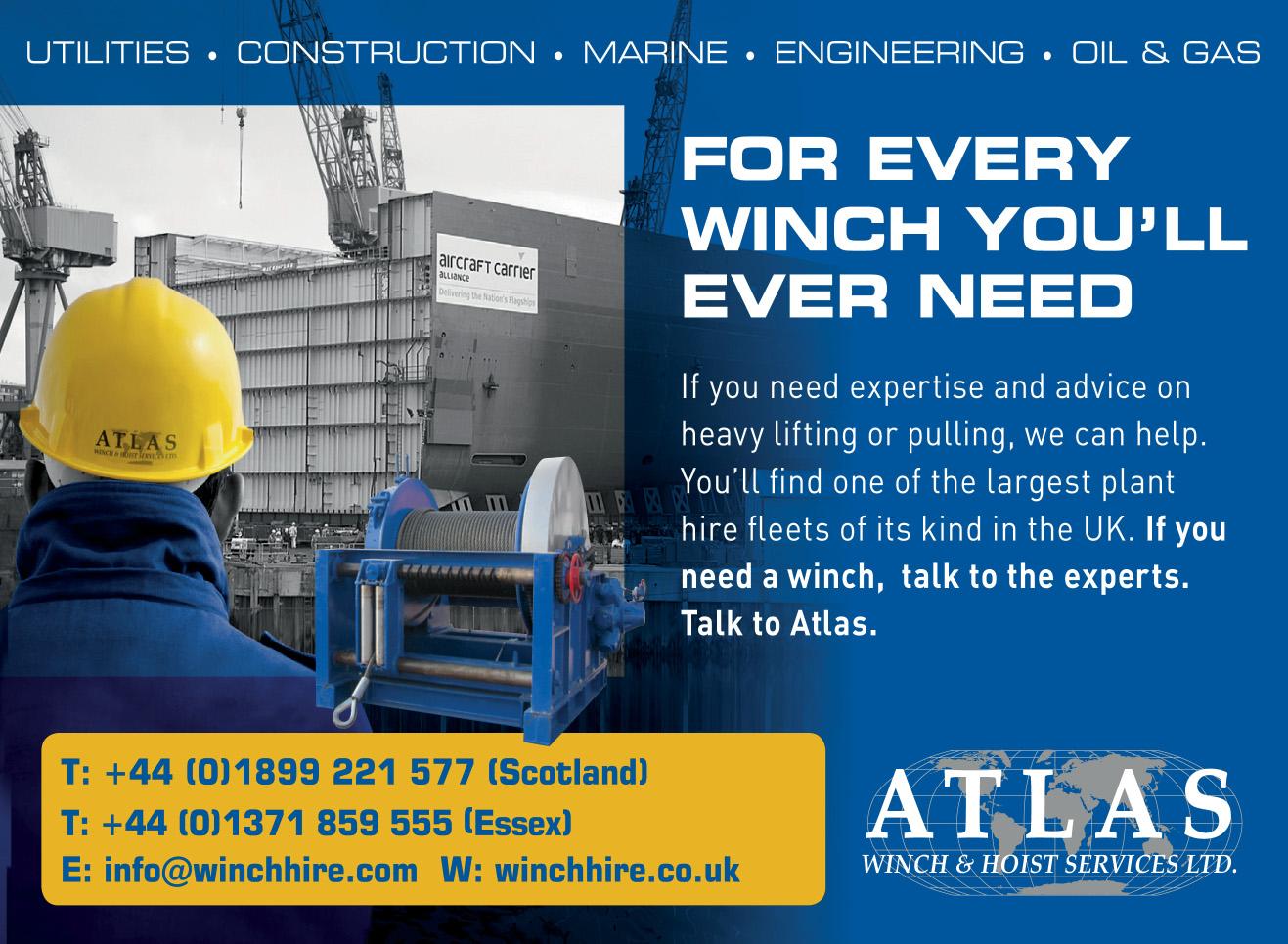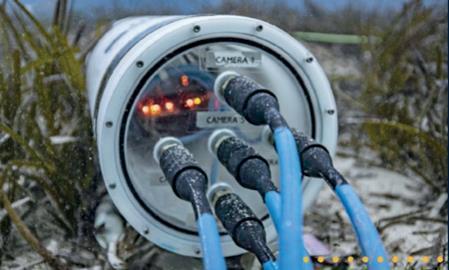
16 minute read
Oceanology
EMPHASISING THE IMPORTANCE OF OCEAN DATA
Thousands of attendees can now testify to the fact that ocean data technology is getting better - if not bigger
London’s Excel Centre in March hosted the fi rst Oceanology International event since lockdowns made live events impossible, and the overarching theme was the importance of ocean data – obtaining it, Interpreting it, and then acting on it.
Take MacArtney’s NOUS underwater surveillance system, for example, which allows real-time viewing of priceless ‘underwater museums’ such as the Peristera, a Greek shipwreck in the Aegean Sea that the country’s Ministry of Culture is protecting by prohibiting diving or snorkelling above it.
Dubbed the ‘Parthenon of shipwrecks’, the Peristera sank in the late 5th Century BC in the largest marine-protected area in Europe.
Using underwater pluggable electrical SubConn connectors to combine signal and power, MacArtney’s NOUS works on a machine-learned algorithm to provide real-time video of the wreck site streamed via five underwater cameras.
Fugro unveils fi rst ROV to be launched from mother ROV
Fugro was one of the show’s 447 exhibitors, and one of many to launch their very latest in technology – in Fugro’s case, the first remotely operated vessel to be housed and launched from a mother uncrewed surface vessel.
Fugro gave live demonstrations of the 12m Blue Essence USV at the Royal Victoria dock, demonstrating how operators in Aberdeen, the Scottish city 860 miles away from London, could control the launch and recovery of Blue Volta, by Blueye Robotics, the first ROV in the world that can operate via Fugro’s global network of remote operations centres.
Designed to withstand harsh conditions, the polypropylene frame protects it and its high-spec range of sensors for inspection and light that Fugro says would not normally be found in an ROV of this size – a mere 1500mm(l) x 650mm (h) x880mm (w).
Blue Volta can be launched on a dedicated launch sled and umbilical management system to a maximum depth of 450m, or with simple modifications, as low as 1,000 msw.
“We look at the advantages that uncrewed solutions offer, and particularly taking people out of the hazardous offshore environment is the principal benefit,” said Dan Jones, service line director for Fugro in its Aberdeen Inspection, Repair and Maintenance services.
“We have an operational limit with the ROV in the water of 10 days – we’ve operated it for approximately six days so far with no fuel requirements – and that gives us access to approximately 100 miles offshore.”
The vessel can conduct surface survey of the sea floor to inspect subsea cables, for example, using sonar with ranges of up to 100 metres.
HUGIN Edge draws crowds
The extremely slick-looking HUGIN Edge by Kongsberg Maritime drew possibly the biggest crowd when unveiled at Oi.
Extensive hydrodynamic modelling together with Kongsberg’s carbon monocoque design and a refined lowdrag hull shape are some of the reasons why the company’s latest brightly coloured autonomous underwater vehicle is being hailed as the most advanced AUV yet.
The machine has been configured for ease of deployment from all platforms and offers new sonar design, providing 3D sensing capabilities for improved trajectory planning and directional collision avoidance, couple with traditional forward-scanning methodology.
It is also equipped with open interfaces that can be integrated with third party planning and mission management tools, specifically designed to optimise results. ”Mission objectives may include sounding density or detection probability, enabling the AUV to calculate the actual waypoints, operational parameters and sensor configuration,” says the company. ”In-mission adaptive execution allows HUGIN Edge to make several decisions autonomously, continuously replanning during mission execution as more information about the surrounding environment is gathered by the sensors.”
The smallest of the HUGIN family, Edge is less than four metres long and weighs just 300kg, with batteries providing the power supply.
Hear VP of Marine Robotics Sales Richard Mills at the Oi event speaking to MJ editor Debbie Mason in our podcast here. “After two years of disruption across the different industries we serve it was hugely satisfying to be able to open Oi in London,” said show director David Ince. “We saw thousands of ocean professionals getting back to the core of our business, face-to-face events.”
Oceanology International returns to London in 2024, but next year will also be held in San Diego and Abu Dhabi.

8 MacArtney subsea
camera
8 HUGIN Edge
AUV, by Kongsberg Maritime
KONGSBERG WINS CSOV EQUIPMENT ORDERS
Kongsberg Maritime has won equipment package orders for two newbuild off shore wind construction service operation vessels
The €20m equipment order is for the Norway-based off shore wind service company Integrated Wind Solutions ASA (IWS).
IWS already has the two identical vessels on order for delivery in 2023 and option agreements for up to two additional vessels, making this a potential six-vessel series.
“This fleet of important and highly innovative vessels will set a new benchmark for CSOVs, further reinforcing Kongsberg Maritime’s market position in the growing renewable energy segment,” said Egil Haugsdal, president, Kongsberg Maritime.
In demand
This new IWS fleet has been designed specifically for the renewable offshore wind market, with a clear focus on reduced emissions and enhanced sustainability. The vessels will be built to Kongsberg Maritime’s UT 5519 DE design by the shipyard China Merchant Heavy Industries (CMHI), with which KM has a long and close relationship.
The UT 5519 DE has a novel double-ended hull form and propulsion set-up, incorporating results from research and development projects as well as operational experience from Kongsberg Maritime’s wind farm service vessel designs to minimise emissions and maximise manoeuvrability and efficiency.
The vessels are built around a technological backbone provided by the comprehensive KM-supplied integrated equipment solution, which includes permanent magnet azimuth thrusters, generators, electrical systems, a fully integrated bridge with navigation, dynamic positioning (DP) and automation systems, deck machinery equipment and control systems.
“We see increased interest in our vessels and the integrated services that IWS provides,” said Lars-Henrik Røren, CEO of IWS, “as demonstrated by our charter contracts with Dogger Bank Offshore Windfarm.”
“We are very pleased to strengthen and build upon our relationship with Kongsberg,” added Christopher Andersen Heidenreich, COO of IWS, “both through the design and development phase and in the future, as we look forward to continuing to work together.”
This latest equipment order for the further two vessels in the series will be delivered in the first half of 2024.
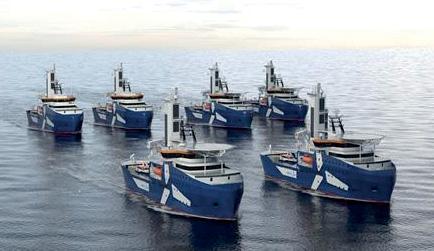
8 Kongsberg
Maritime is supplying integrated equipment packages for two new CSOVs/ SOVs, augmenting two similar vessels which KM is already equipping
Nexxiot launches upclose cargo tracker
Nexxiot’s upgraded sensor can monitor and give real-time visibility of cargo within containers.
Digitisation company Nexxiot has launched the latest in its line of monitoring sensor devices, ’Cargo Monitor’, which differs from its existing products by tracking cargo on a much closer scale.
Whereas existing products such as ’Globehopper Edge’ are focused on monitoring the position, meovement, handling activities and use of each container while it is shipped, the Cargo Monitor includes a more powerful transceiver, which is placed inside the container itself.
It is then able to monitor the transport of higher value and more conditions-sensitive products such as perishables, pharmaceuticals, electronics and so on, and provide real-time data on conditions such as cargo damaging shocks, humidity, temperature and security issues.
“Cargo Monitor will stay with that particular pallet or object for the entire journey,” head of Cargo and managing director Matilda Bouchet told Maritime Journal.
”The device specifically monitors cargo parameters and adds another critical layer for clients as part of the Nezziot hardware portfolio.”
“Resource insecurity, geopolitics, blockages, and interruptions all serve to highlight humanity’s dependance on transported cargo to maintain a high quality of life. Manufacturers, retailers, and consumers increasingly expect to receive information on cargo location and quality. The new Nexxiot Cargo Monitor represents a quantum leap forward in supply chain visibility and intelligence.”
Data transmission is guaranteed for 90 days, Nexxiot says, notifying cargo stakeholders of the exact status of their cargo anywhere in the world.

8 Nexxiot’s new Cargo Monitor
BAHRAIN BUYS FOLDING WORKBOAT FOR NAVAL FLEET
WorkFloat has delivered a self-propelled foldable work fl oat to the Kingdom of Bahrain to support its growing naval fl eet.
A fl oating work platform that can be folded away has been built for Bahrain’s naval fl eet.by UK builder WorkFloat.
The 12x6m floating platform will be used for support tasks in the port and includes a crane that can lift just under half a tonne at 13m, a deck load capacity of over 10t, a 2t deck winch that can be used for mooring work, a central moon pool for drilling or GI work, full electrics and navigation, bow loading ramps for military vehicles, spud cans for 10m spud legs, a retractable bow thruster and 2 x 70hp Yamaha high thrust outboards that give 7 knots and 1.2t of bollard pull.
It is also built to the MCA workboat code and complies with relevant class standards for lifting and stability.
The platform can be stowed with all equipment inside a standard shipping container.
WorkFloat won the ‘Spirit of Innovation’ award at Seawork in 2019, which was the last time it could be held in person before lockdowns paralysed the world. The event will be back on in style in June
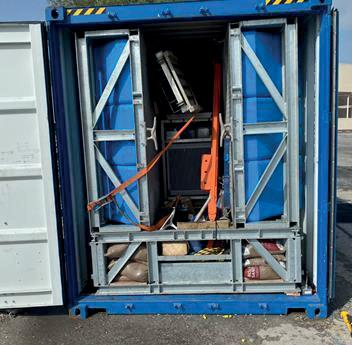
WorkFloat won the ‘Spirit of Innovation’ award at Seawork in 2019, which was the last time it could be held in person before lockdowns paralysed the world.
The event will be back on in style in June. ’It is a massive milestone for the business to design, build, deliver and then commission this WorkFloat for the BDF,” said WorkFloat MD and founder Toby Budd.
WorkFloat says it is now designing the next evolution of the system, a modular system named WF1200, which can be jacked up out of the water, will have similar frame structure and floats with a higher payload capacity and bigger crane options.
With its modularity the product is closer in design to the firm’s other product, ScaffFloat.
“The ability to ‘jack up’ has been driven by demand from existing geotechnical, civils and diving clients,” said Budd. “Being so light and easy to mob, the WF1200 system will be able to provide the benefits of a jack up barge on inland waterways, under bridges, landlocked lakes and lochs and other sites that traditional larger jack up barges can’t access.
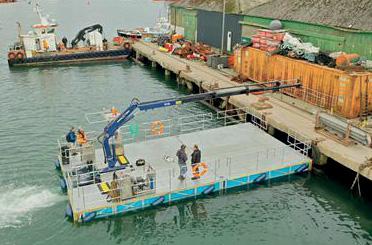
8 WorkFloat on
the water. Inset: WorkFloat in its container
Building begins of world’s largest car carriers
A deal has been signed for Cargotec’s UK subsidiary MacGregor to supply equipment for four PCTCs that will be the largest in the world.
MacGregor, the UK subsidary belonging to Finnish firm Cargotec, will supply RoRo equipment for Aurora class Pure Car and Truck Carriers for Norwegian shipowner Höegh Autoliners.
Designed by Deltamarin, which is owned by the China Merchants Industries, the vessels in this class can carry up to 9,100 vehicles.
They have strenghtened decks and internal ramp systems that will allow electric vehicles to be carried on all decks, with MacGregor’s Load Monitoring System boosting the load capacity of the ramp and
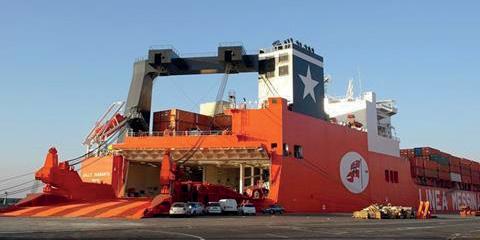
8 MacGregor RoRo equipment
Photo by Ignazio Messina & C
providing more flexibility for heavier project cargo. The class will also have DNV’s ammonia and methanol ready notation.
The $15m order has been booked into Cargotec’s 2022 first quarter intake, with delivery of the first two vessels scheduled for the second half of 2024 and the next two the first half of 2025.
“Close collaboration with the owner, designer and builder is essential for a project such as the Aurora class to be successful, and we look forward to continuing our work together towards delivery of the first two vessels in 2024,” said Magnus Sjöberg, senior vice president, Merchant Solutions, with MacGregor. ”The Aurora class represents the future of our business,” said Andreas Enger, CEO of Höegh Autoliners. “It will strengthen our service offering, accelerate our path to zero emissions and put us in the forefront of sustainable shipping.”
ULSTEIN PLEDGES TO FILL HEAVY LIFT SHORTAGE HOLE
Ulstein has vowed to fi ll the shortage of heavy lift vessels which is jeopardising the timely installation of increasingly large next-generation wind turbines
Market analysts are projecting a shortage of specialised equipment as soon as 2025, putting the future of off shore wind farms at risk.
Ulstein believes its proven, off-the-shelf heavy lift vessels, in particular its HX118 design, can help reduce that risk.
“We worked for four years on the development of this design, using our unique ‘Ulstein Blended Design’ methodology, CFD simulations, and knowledge gained from the ALFA LIFT design and Aegir conversion,” said Ko Stroo, lead naval architect and product manager in Ulstein Design & Solutions.
“Combining our vast track record in heavy lift vessels with business case analysis and latest installation technologies resulted in what basically is the Mk3 version of our SOC 5000 design.”

The ULSTEIN HX118 design is the third evolution of the ULSTEIN SOC 5000 design, of which several vessels are currently in operation or under construction, including Heerema’s ‘Aegir’ and Subsea 7’s ‘Seven Borealis’.
Developed to handle the next-generation foundations, monopiles as well as jackets, the design features a 5,000mt main crane with large lifting heights and a large, strong open deck. Methanol powered generators, an optimised hull design and smart integration of battery systems ensure low emissions during operations and when in port.
“We have already received favourable pricings on this HLV design from multiple yards worldwide,” added managing director Edwin van Leeuwen. “All ingredients are available to the industry to push the button, get into a yard contract and get delivery in 2025.”
8 Aegir - based
on the SOC 5000 design from Ulstein
Huisman wins order for 1,600t off shore crane
Huisman has won an order with Fred. Olsen Windcarrier for delivery of another 1,600mt Leg Encircling Crane (LEC).
The LEC will be installed on jack-up offshore wind turbine installation vessel Brave Tern and follows the previous order of a 1,600mt LEC in March 2020, as part of the major fleet upgrade programme of Fred. Olsen Windcarrier.
“This order underlines our mutual commitment to make Fred Olsen’s installation vessels future proof, suitable for installing the next generation of wind turbines. Our team is looking forward to building the second crane and continuing our close cooperation on tailoring the 1,600mt LECs to the requirements of tomorrow’s offshore windfarms,” said David Roodenburg, CEO of Huisman.
The 1,600mt LEC will be outfitted with a unique 140m boom and has a lifting height of 165m above deck. With its upgraded cranes, the vessels of Fred. Olsen Windcarrier will be capable of installing larger foundations and handling next generation turbines. Huisman said it has designed its LECs to meet the requirements of the continually developing offshore renewables sector. The cranes are lightweight, have high positioning accuracy and can contribute to a reduced emissions footprint during the installation of increasingly large turbines.
They have a fully electrically driven system, resulting in high positioning accuracy, efficient energy use, reduced maintenance and high reliability.
The theme of efficiency is continued in the design of the slew bearing. Its construction in multiple segments ensures ease of inspection and maintenance.
They feature a unique boom design ensuring a lightweight and stiff design, limiting motions at the crane tip. The small tail swing allows for optimised utilisation of free deck space.
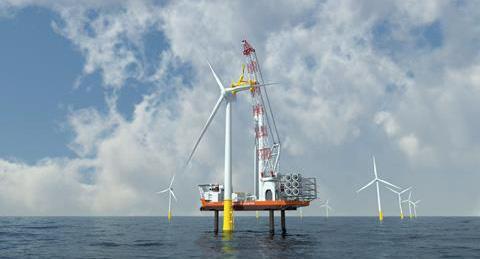
Photo Huisman
8 The new order follows delivery of the
1,600mt LEC in March 2020, as part of the major fl eet upgrade programme of Fred. Olsen Windcarrier
Bolidt deck systems called to the test from the subarctic to the tropics.
Dutch resin specialist Bolidt has announced it has supplied around 7,500m2 of decking for the latest Viking Cruises ship Viking Neptune.
The 227m newbuild all-veranda ship offers cruises around the globe, including harsher environments such as sub-Arctic Scandinavia and tropical Latin America, so the outdoor decking must be able to withstand vast temperature and weather differences.
Bolidt believes its resins are up to the job, and it would appear that Viking agrees, having hired the firm to supply its decking
VIKING NEPTUNE DECKS FOR ALL CORNERS OF THE GLOBE
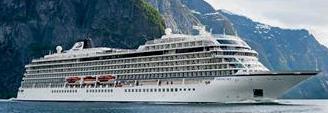
systems on all of its river, ocean and expedition cruise vessels.
For Neptune, Bolidt’s Future Teak has been installed to cover all outdoor areas including the balconies, pool area, crew deck and sports deck.
“Viking Neptune is built for global cruising, and its varied itineraries will take it to all four hemispheres, through a range of weather conditions and to some of the warmest and coolest waters worldwide,” says Bolidt. “Hardwearing and UV-resistant decking is
8 Viking Neptune sails around the world with
deck protection by Bolidt
essential to meet such extremes.”
Viking Neptune also has a built-in deckheating system to prevent ice formation and additional sound insulation.
Viking and Bolidt have a longstanding relationship and have worked together at shipyards all over the world. Bolidt is set to finalise another five newbuild projects for Viking by the end of the year, including Viking Mars.

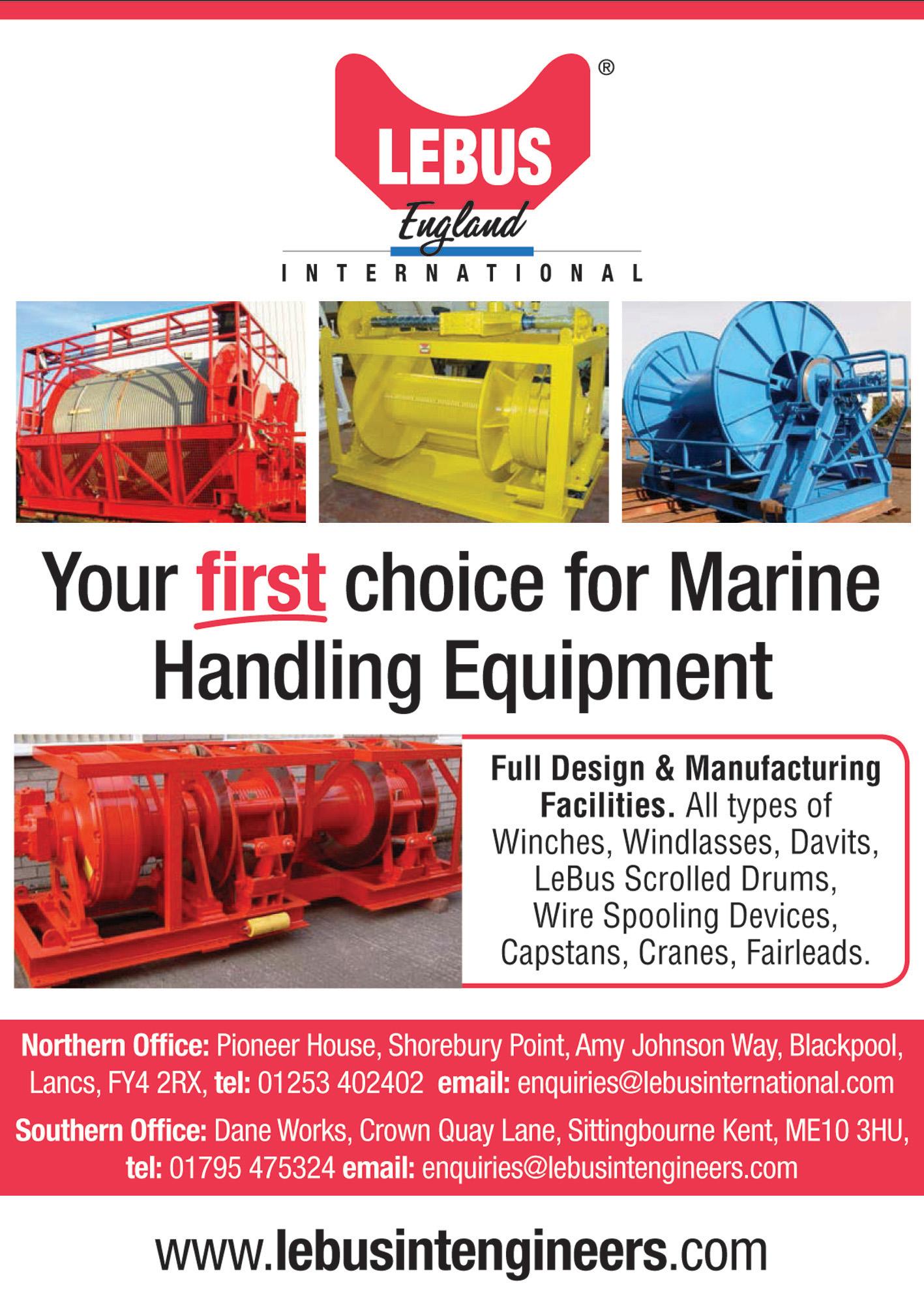
AMPELMANN WINS CONTRACT FOR OFFSHORE SUPPORT
Ampelmann has increased its level of support for off shore services in the Ivory Coast.
Dutch offshore access provider Ampelmann will support maintenance work on a floating production storage and offloading unit (FPSO) for MMA Offshore, the Australian marine and subsea services company, in the Côte d’Ivoire.
An A-type motion compensated gangway has been fitted to MMA Offshore’s MMA Privilege, a FiFi One dynamically positioned DP2 workboat designed for platform commissioning field maintenance tasks and coil tubing operations. It has a Liebherr lattice boom crane for surface-to-platform lifts of up to 50 tonnes and can accommodate 239 people.
Ampelmann’s A-type gangway has already been fitted to the ship, which has arrived at location and will ensure. smooth and continuous crew change operations from the bopat to the FPSO, says Ampelmann.
Ampelmann says it is well known in the West African offshore energy market, with more than 100,000 transfers having been carried out in the Côte d’Ivoire alone.
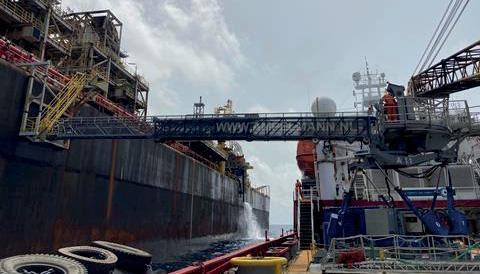
8 Ampelmann A-type gangway
In September 2021, a huge offshore oil discovery was made in the area by Italian energy firm Eni, with potentially 2 billion barrels of oil and 2.4 trillion cubic feet of associated gas. A well has been drilled about 60km off the coast in about 1,200m of water, using a Saipem 10,000 drill ship that reached a depth of 3,445m in 30 days, Eni said.
Subsequent exploitation should mean a huge boost for offshore energy services, but while Ampelmann confirmed it was working for oil and gas operations, it refused to say who the operator was.
Vestdavit brings PLR-5000 davit to Nor-shipping
Norwegian davit fi rm Vestfavit took a full-scale davit to the Norwegian conference.
As its name would suggest, the davit has a lifting capability of five tonnes, and it is the largest davit the company has ever taken to a major exhibition, the company says.
The PLR series of davits has been designed to handle a wide range of so-called interceptor craft, such as fast rescue boats, which range in size between 3.5 and 7 tonnes.
The davits were used by the Royal Navy to deliver Covid-19 vaccines to the Pitcairn Islands in the southern Pacific, which cannot berth larger vessels.
